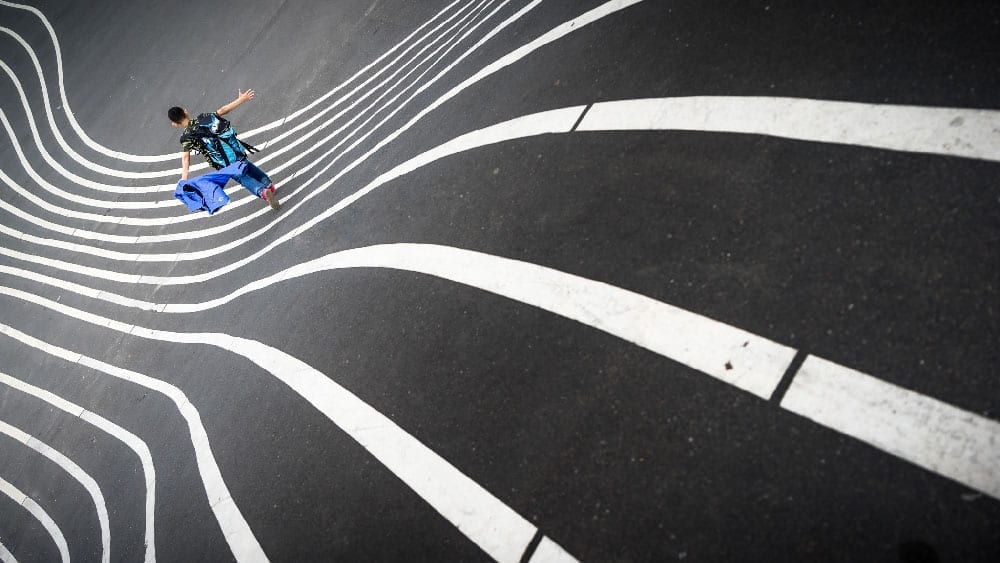No hard feelings: why environmental scholars can’t afford to dismiss children’s views of the good life
“What can children tell you about the good life? Oh popsicles are great, raisins suck.’’ — conversations like this can make for a good laugh, but exemplify an almost systemic scepticism towards children’s legitimacy in social debate, CUSP researcher Anastasia Loukianov finds. There are compelling reasons, she argues, for working alongside young people in defining what it might mean to live well in a world of planetary limits—and we better take them seriously.
Not so long ago I overheard the conversation of a group of environmental scholars about the type of insights they imagined one might obtain in working with children and young people on their ideas of what it means to live well: “What can children tell you about the good life? Oh popsicles are great, raisins suck.’’
Sure, this makes for a good laugh, but the delivery struck a deep chord. Unfortunately, it exemplifies a scepticism towards children’s legitimacy in social debates that childhood scholars systematically run against. Sheltered, I have so far methodically avoided addressing the issue. But as the date of my thesis completion is looming closer, I am confronted with the uneasy feeling that my silence in the face of the common misconception of children’s legitimacy in contributing to social debates is a cowardly betrayal of the inclusive sustainable future that I stand for. Please let me clear my conscience and rectify my mistake.
First, it may be worth pointing out that although our understandings of children and childhood have biological bases, they are not set in stone. Among childhood studies scholars, it is generally accepted that the social meanings of childhood have evolved throughout history. In contemporary western societies children have gained increasing legitimacy as social persons, but Cook (2005:156) highlights that one of the prevalent models of the child is still ‘‘one of a not-yet competent, not yet complete social actor’’. In childhood studies, this model is often referred to as that of the ‘‘becoming’’ child, understood as an adult in the making who is lacking the skills and features of the adult that they will become (Uprichard, 2008). Clearly, this is the model of childhood underlying the systematic scepticism towards children’s legitimacy in the debate over the meaning of the sustainable good life.
Yet, there are compelling reasons for working alongside young people in defining what it might mean to live well in a world of planetary limits. These are perhaps best understood in the context of CUSP researcher Marit Hammond’s defence (2018) of the intertwining of sustainability and democracy. In her journal article, Marit skilfully argues that given the nature of sustainability as an ongoing process, an undemocratic enforcement of environmental sustainability could only ever be temporary. If the meanings attached to sustainability were left unchanged, unsustainable practice were bound to reappear as time went on and new generations came of age. Hence the story of a sustainable and prosperous future needs to be one that people from all social and cultural groups can relate to and are eager to be a part of. Such a story can only come from the people themselves.
When I work with children I think of them much in the same terms as I think of adults: both as ‘‘beings’’ and as ‘‘becomings’’. In fact, I pay attention to three aspects of their identity and see them a) as positioned in a particular life stage, b) belonging to a given culture and society, and c) part of a specific generation. All three of these aspects have crucial implications for their legitimacy in the journey for a sustainable future.
As a life stage, childhood can be interpreted as a structural form and can theoretically be apprehended through the concept of class (Qvortrup, 2009). Similarly, to socio-economic classes, childhood is defined by what its members do, and through its position in relation to other groups in society. Of course, from a class perspective, children experience a 100% upward mobility. And yet, although individual children disappear from childhood, childhood as a form does not disappear. Unless humanity is ready to face extinction, childhood is bound to remain. Under these circumstances, the possibility of a democratic sustainable future without the involvement of one of humanity’s largest minority groups seems rather dubious to me. While in many respects their needs and desires are similar to those of adults (after all they are human), they may just be best-placed to shed light on the specifics of what makes a worthwhile childhood.
As part of a given society and culture, children ensure cultural stability. For their own survival, children have to become competent members of a community by making sense of its social customs and cultural norms (Gaskins, 1999; Howell, 1988). As they grapple with the meanings of a culture, children reveal what it means to be human in a particular cultural way. This process of acquisition of cultural ontologies can be seen as a lens of our social and cultural identities and continually engages anthropologists who mean to explore their intricacies. For instance, children’s consumption practices are a particularly rich area for understanding how consumerism is interiorised as a civic duty in the neoliberal twenty first century.
As part of a specific generation, children play a crucial role in the possibility of a democratic sustainable future by breathing change into cultural and social values. Admittedly, the current social climate gives them little scope for institutionalised action (although this has certainly been known to happen, see for instance the Environmental Children’s Organisation), but careful identification of the discourses that they use can give us an idea of where we are headed. Children’s necessary engagement with meaning-making and storytelling makes childhood a particularly fruitful time for the acquisition of ecological values and lifetime sustainable habits. Yet all parents will know that children can be unruly subjects and do not easily let themselves be educated. Perhaps they will lead us in an unsustainable direction, perhaps they will not. It is up to us to provide settings that are favourable to the normalisation of sustainability and enable them to be part of the process.
Ultimately, research might do just that. Engaging children and young people in research gives them a space for critical reflection about environmental issues and sustainable wellbeing, as well as a much needed sense of agency. Participatory research, in its own ways, offers a promising setting for admitting the possibility of sustainable and prosperous societies in the public imagination. This colossal task simply cannot happen without the participation of all social groups. In the words of the young Severn Cullis-Suzuki: ‘‘I’m only a child, and I don’t have all the solutions. I want you to realise, neither do you.’’
Further Reading
References
Cook, D.T. (2005), ‘’The Dichotomous Child in and of Commercial Culture’’, Childhood, 12(2): 155-159, London and New Delhi: SAGE Publications. DOI: 10.117/0907568205051901
Cullis-Suzuki, S., (1992) The Girl Who Silenced the World for Six Minutes, Speech Transcript.
Gaskins, S. (1999), ‘’Children’s Daily Lives in a Mayan Village’’, Gocu, A. (ed) Children’s Engagement in the World: Sociocultural Perspectives, 25-62, Cambridge: Cambridge University Press
Hammond, M. (2018) ‘’A Cultural Account of Ecological Democracy’’, Environmental Values.
Howell, S. (1988), ‘’From Child to Human: Chewing Concepts of Self’’, Jahoda, G., and Lewis, I., (eds) Acquiring Culture: Cross Cultural Studies in Child Development, 147-168, London: Routledge
Qvortrup, J. (2009) ‘’Childhood as a Structural Form’’, Qvortrup, J., Corsaro W.A., Honig, M.S. (eds) The Palgrave Handbok of Childhood Studies, London: Palgrave Macmillan
Uprichard, E. (2008), ‘’Children as ‘Being and Becomings’: Children, Childhood, and Temporality’’, Children & Society, 22: 303-313. DOI: 10.1111/j.1099-0860.2007.00110.x




